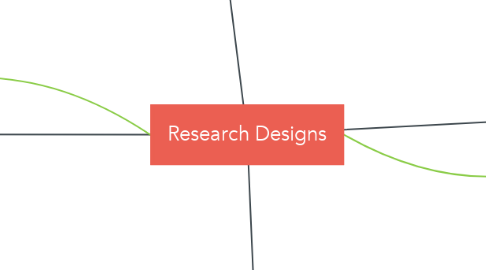
1. Obvservational Studies
1.1. Concurrent Prospective Study
1.1.1. incidence
1.1.2. longitudinal
1.1.3. follow up
1.1.4. Cohort
1.1.5. determination of relevant information from the past of exposed and non-exposed subjects up to present time and followed into the future
1.1.6. incidence should be adjusted
1.1.6.1. calculate total observation time as a whole (add up observation time of all subjects)
1.1.6.2. calculate actuarual incidence base on "survival" tables
1.1.6.3. calculate incidence table
1.1.7. "case-control studies"
1.1.7.1. subjects affected - cases
1.1.7.2. subjects on affected - controls
1.2. Non-Concurrent Prospective Study
1.2.1. shorter execution times, lower cost, difficult to retrieve information
1.2.2. determination of relevant information from the past of exposed and non-exposed subjects up to present time
1.3. True Retrospective Study
1.3.1. groups are selected with or without characteristic of interest at the time of selection and subject past is search for overall exposure of characteristic being studied
1.3.1.1. OR=1; no conclusion to relationship
1.3.1.2. OR=>1; positive relationship association
1.3.1.3. OR=<1; relationship is negatively associated
1.3.2. overall goal is to verify whether or not the incidence of the desired characteristic is clinically and statistically different from those that are not exposed
1.4. Cross-Sectional Retrospective Studies
1.4.1. "prevalence study" since they allow for calculation in prevalence rates (single point in time)
1.4.2. researcher is unaware if desired characteristic is acquired before or after occurrence of event
1.5. Cross-sectional Prospective Study
1.5.1. subjects selected on desired characteristic while event is chosen at the present time
1.5.1.1. disadvantage: researcher does not know for certain if the desired characteristic being tested was acquired before or after the event
1.5.2. "transversal prospective study"
1.5.3. not suitable for calculating incidences
1.6. studying the relationship between a characteristic and an event without the manipulation of conditions
1.7. Cause-effect: the stronger the association, the stronger the suspicion
2. Qualitative
2.1. define key characteristic of subjects to be enrolled
2.2. define mechanism for selection of subjects
2.3. non-statistical
2.4. ex. focus groups, interviews, discussions
3. Quantitative
3.1. sample size is result of statistical, medical, and practical considerations
3.2. sometimes followed by quantitative research
3.3. ex. surveys, simulations, etc.
3.4. information is usually organized in charts (tables, graphs, tabulations)
4. Experimental Studies
4.1. researcher controls the conditions and allows for increased level of certainty
4.1.1. more restricted than observational studies
4.1.2. shorter duration, less burdensome for the patient
4.1.3. statistically requires fewer assumptions and thus reduces reliability of conclusions
4.2. Parallel Groups
4.2.1. simple randomization
4.2.1.1. completely randomized design
4.2.2. stratified randomization
4.2.2.1. stratified design
4.2.2.1.1. effect of treatment, effect of stratification, and effect of interaction of treatment and stratification
4.2.2.2. prognostic/sub-experimental factors are the most significant aspect
4.2.2.3. selected groups have a homogenous distribution
4.2.3. randomization in blocks
4.2.3.1. randomized block design
4.2.3.1.1. used to avoid inequalities in size of groups being analyzed when in a small group
4.2.3.1.2. used to obtain numerically and constantly balanced groups
4.2.3.1.3. advantages: multi center, sequential design
4.2.3.1.4. disadvantages: loss of blind and randomization in small number, selection bias
4.2.4. factorial design
4.2.4.1. presence of more than one control
4.2.4.2. allows researchers to see how manipulation of certain variables can affect a subject
4.2.5. each study subject receives one study treatment
4.3. Cross-Over Groups
4.3.1. simple randomization
4.3.1.1. completely randomized design
4.3.2. stratified randomization
4.3.2.1. stratified design
4.3.3. randomization in blocks
4.3.3.1. randomized block design
4.3.4. incomplete cross-over
4.3.5. factorial design
4.3.6. each study subject receives more than one study treatment, unlike parallel
4.3.6.1. continuation of effect of treatment to following period - carry-over effect
4.3.6.2. interval between end and beginning of next treatment - wash-out
